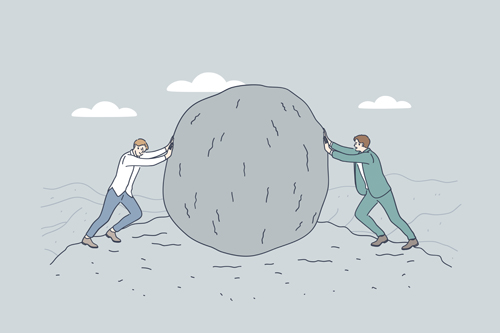When people hear the name Newton, they usually picture the story of an apple falling on his head while he was sitting under a tree. Isaac Newton was a scientist from the 17th century and is often regarded as one of the greatest minds in human history. He dedicated his life to scientific exploration, using his intellect to benefit humanity.
Many concepts we now consider normal were once revolutionary ideas. Newton completely changed how people viewed the world around them, especially with his laws of motion, which form the foundation of mechanics. Newton’s laws have a wide range of applications, from the simplest act of walking to complex engineering and aerospace technology.
Newton’s first law of motion: The law of inertia
Newton’s first law of motion states that an object at rest will remain at rest, and an object in motion will remain in motion unless acted upon by an outside force. This law is often referred to as the law of inertia. In physics, inertia refers to an object’s tendency to remain inactive or stable. If objects did not have this property, everything around us would collapse.

Imagine a book on a table stays in place unless someone moves it. Similarly, passengers in a moving car continue moving forward when the vehicle suddenly stops because their bodies resist the change in motion. Another example is when a soccer ball is at rest and will not move until a player kicks it. Once in motion, the ball will continue to roll until friction with the ground and air resistance slow it down, eventually bringing it to a stop. This everyday observation is a direct example of Newton’s first law of motion.
Newton’s second law of motion: The law of acceleration
Newton’s second law of motion states that the acceleration of an object depends on the mass of the object and the amount of force applied. This can be expressed with the equation F=ma, where ‘F’ is the force applied, ‘m’ is the mass of the object, and ‘a’ is the acceleration.

Imagine you need to hit two types of balls with a baseball bat: one is a regular baseball, and the other is larger and heavier. Because these balls have different masses, when you hit them with the same amount of force, they will move differently. If you hit the lighter ball harder, it will go further.
In the field of automotive engineering, this principle is essential for creating brakes and engines. When a driver hits the brakes, the force they apply needs to be strong enough to slow down the vehicle’s mass and bring it to a safe stop. Likewise, the power generated by an engine affects how fast a car can speed up.
Another example of Newton’s second law is the motion of rockets. The propulsion force generated by expelling exhaust gases at high speed causes the rocket to accelerate in the opposite direction. This principle is fundamental to space exploration, where engineers must calculate the required force to escape Earth’s gravitational pull.
Newton’s third law of motion: The law of action and reaction
Newton’s third law of motion states that for every action, there is an equal and opposite reaction. This can be expressed with the equation FA= -FB, where A and B are variables indicating the objects. In this equation, FA represents the force applied by object 1 on object 2, while FB represents the force applied by object 2 on object 1. The negative sign indicates that these forces are in opposite directions.

You might be surprised to learn that if it were not for this physical law, we would not be able to walk on the ground at all. Every time we take a step, we push down with force onto the ground. In response, the ground pushes back with an equal force, lifting our feet. This interaction is what allows us to walk, run, and jump.
In physics, the way a jet engine works can be explained by Newton’s third law. When the engine expels gas particles at a high speed in the backward direction (action), and in response, the aircraft moves forward (reaction). This concept is not just for aircraft; it also applies to how spacecraft are propelled.
Similarly, when a swimmer moves, they push water backwards with their hands and feet, which helps them move forward in the water. This simple but effective example shows Newton’s third law in action.
Newton’s laws of motion play a crucial role in our daily lives and the development of advanced technologies. These principles are everywhere, influencing everything from engineering and sports to our routine activities. By noticing everyday situations, like pushing a shopping cart or launching rockets, we can see how significant Newton’s laws are and how they continue to shape our world.
At Center Point School, we are committed to helping our students gain a solid grasp of several such fundamental principles of Physics, motivating them to gain greater insight into the world around us. Whether it is in the classroom, the lab, or through hands-on projects, we want to inspire future thinkers and innovators to leverage Newton’s laws to tackle upcoming challenges. Our comprehensive approach to education ensures that students not only learn the theory but also see how it applies in real life, preparing them to make valuable contributions to society.





